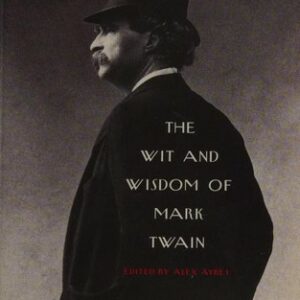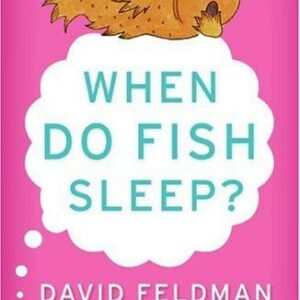The Bird
$18.00
| Title | Range | Discount |
|---|---|---|
| Trade Discount | 5 + | 25% |
- Description
- Additional information
Description
• How are birds so good at flying and navigating?
• Why are birds so like mammals– and yet so very different?
• Did birds descend from dinosaurs, and if so, does that mean birds are dinosaurs?
• How do they court each other and fend off rivals?
• What’ s being communicated in birdsong?
• Can we ever know how birds think?
In this fascinating exploration of the avian class, Colin Tudge considers the creatures of the air. From their evolutionary roots to their flying, feeding, fighting, mating, nesting, and communicating, Tudge provocatively ponders what birds actually do–as well as why they do it and how. With the same curiosity, passion, and insight he brought to redwoods, pines, and palm trees in his widely acclaimed book The Tree, Tudge here studies sparrows, parrots, and even the Monkey-eating Eagle to better understand their world–and our own.
There is far more to a bird’s existence than gliding gracefully on air currents or chirping sweetly from fence posts–the stakes are life and death. By observing and explaining the complex strategy that comes into play with everything from migration to social interaction to the timing of giving birth to young, Tudge reveals how birds are uniquely equipped biologically to succeed and survive. And he offers an impassioned plea for humans to learn to coexist with birds without continuing to endanger their survival.
Complete with an “annotated cast list” of all the known birds in the world– plus gorgeous illustrations–The Bird is a comprehensive and delightfully accessible guide for everyone from dedicated birders to casual birdwatchers that celebrates and illuminates the remarkable lives of birds.Praise from abroad for The Bird
Chosen as a best book of the year by The Independent
“Colin Tudge marries the poetry and the science of the dinosaur’s best-loved descendants. . . . A master of clear science writing, Tudge throws a state-of-the-art spotlight on every aspect of the bird’s life from migration to cooperation.”
—The Independent
“[A] book simply fizzing with ideas. Provoking yet always persuasively argued. . . . Besides having an enviable grasp of scientific fact, Tudge writes with narrative fluency.”
—Literary Review
“Tudge’s writing is always clear and frequently embellished with wry humor. Occasionally, it is inspired.”
—Sunday Telegraph
“In the book’s final section . . . the gloves are off, and he produces a masterful critique of politicians and economists, making an excellent (but probably doomed) case against the geopolitical status quo and its tragic effect on the world’s birds. This is a powerful, thoughtful piece of writing, which transforms an entertaining romp through avian biology into a compelling tract for our times.”
—Guardian
Praise for The Tree
“Enchanting . . . Tudge sees grandeur in how trees exist in the world . . . and demonstrates it with fascinating stories.”
—New York Times Book Review
“Tudge writes in the great tradition of naturalists such as Humboldt and John Muir. . . . Eloquent and deeply persuasive.”
—Los Angeles Times
“A love letter to trees, written with passion and scientific rigour . . . a pleasure to read. Tudge writes with warmth and wit.”
—Financial TimesCOLIN TUDGE is the author of The Link, The Tree, The Variety of Life, and So Shall We Reap and a fellow of the Linnean Society of London. A former features editor for New Scientist and documentarian for the BBC, he is currently a full-time writer and public speaker. He lives in Oxford, England.1
What It Means to Be a Flier
“All animals are equal,” the ruling pigs declared in George Orwell’s Animal Farm. “But,” they added, “some animals are more equal than others.”
All animals are equal no doubt in the eyes of God, and all that manage to survive at all in this difficult world are in some sense “equal.” But some, by all objective measures, are far more impressive than others; and none, not even the mammals, the group to which we ourselves belong, quite match up to the birds. Birds have their shortcomings, to be sure, as flesh and blood must. But they are, nonetheless, a very superior form of life.
Above all, birds fly.
They are not the only animals that have taken to the air, of course. There are many gliders. Flying fish are remarkably adept, and various frogs and snakes and lizards contrive to parachute from tree to tree; and there is a variety of gliding mammals, including phalangers and squirrels and colugos (sometimes known as flying lemurs). But only four groups have managed powered flight, driving themselves through the air by flapping or whirring their wings. Many insects fly wonderfully. Bats fly well enough to catch insects in the air–and, for good measure, they do it at night. The ancient pterosaurs, contemporaries of the dinosaurs, included some of the biggest powered fliers of all time–and what a sight they must have been! Pelicans, returning home against the evening sun, might give us some idea of what they were like.
But none of these creatures flies as well as the birds. Perhaps this is why birds are still with us and pterosaurs are not. Perhaps this is why bats fly mainly at night; if they are ever forced to fly by day, as they may do in cold weather when there are too few nighttime insects, they quickly get picked off by hawks.
Flight, indeed, is the key to birds. Many have abandoned flight, of course, like penguins and Ostriches, and there are or have been flightless ducks and geese, many flightless rails and auks, at least one flightless ibis, flightless cormorants, and flightless parrots. The famous Dodo was a flightless pigeon, and there was even one flightless passerine (a perching bird)–or so it’s said, though it is hard to tell, since the bird is extinct. But all of these flightless types had flying ancestors. Some birds fly but ineptly–including the superficially grouse-like tinamous of South America, which hurtle along with huge bravado but little control, and sometimes end up killing themselves, like twelve-year-old joyriders. On the whole, sensibly, tinamous prefer to stay on the ground.
The fact that birds fly–or at least are descended from ancestors that were adapted to flight–dominates all aspects of their lives. Flight brings huge and obvious advantages, but it is also immensely demanding and so has its downside, too.
WHAT IT MEANS TO BE A FLYING MACHINE
As a mammal, I have often admired and envied birds–as who has not?
I remember once, in southern Spain, struggling over the rocks to get to the base of some cliff to catch a glimpse of the Egyptian Vultures that in the evening appear over the edge, riding along the length of it on the up-currents–not for any obvious reason, since it is too late to feed at that time of day but just, it seems, to keep an eye on things, like the squire riding his estate.
After half an hour or so the vultures did turn up. Birds in general have big eyes–their skulls are built around the orbits–and in birds of prey they are particularly big. The eyes of a big eagle are as big as a human’s. In birds of prey (and in some other birds such as kingfishers and swallows), the retina has two foveas (particularly sensitive spots), and the eyes as a whole have a greater concentration of light-gathering, color-sensitive cones than any other vertebrate. So the visual acuity of a hawk or a vulture is two or three times as great as ours. Australia’s huge Wedge-tailed Eagle has been shown to see rabbits clearly from a kilometer and a half away. So I daresay that those Egyptian Vultures could see me and my companions more clearly with their unaided eyes than we could see them with all the technology of Zeiss lenses; and it took them less time and almost zero
effort to fly the 6 miles or so that they had doubtless traveled than it had taken us to struggle a few hundred yards from the road. As a heavyweight mammal land-bound and land-locked by gravity, I felt inferior. All animals may be equal according to the ideology–but here, truly, birds were the masters.
Yet evolution has not worked entirely in the birds’ favor. They pay a price for their magnificence and their skill; and they seem to pay an even higher price than seems strictly necessary. Even the birds that no longer fly–even the ones that have all but abandoned wings altogether, like the kiwi–deep down are built for flight. In general this means they have to be small. If you double the linear dimensions of a bird–or, indeed, of anything: a guinea pig, a brick, a ship–yet retain the same proportions, then you will increase its weight by eight times.
A bird with a body that’s 20 centimeters (71/2 inches) long, like a fairly average thrush, weighs eight times as much as one of 10 centimeters (4 inches), like a small finch or weaver. A 40-centimeter (16-inch) bird like a grouse is eight times heavier again–sixty-four times heavier than the finch, or six football teams’ worth of people compared to a single person. Whether or not a bird can fly depends on its wing “loading”–the mass that needs to be lifted per unit area of wing. But the area of a wing increases only four times as the body length is doubled, if the overall proportions remain the same. So a thrush that needs to fly as well as a finch needs wings that are twice as big, relative to its body size, as the finch’s–and so on and so on: the bigger the bird, the bigger the wing needs to be, not only in absolute terms but also relative to the body size.
The physics of flight is well understood–or so the textbooks suggest. My own sympathies lie with an airline pilot I once met who regularly took 747s across the Atlantic but told me that he still did not quite believe that such egregious structures could really fly at all, since they are big as a row of small houses and many times heavier than air, and stuffed with people and suitcases for good measure. He did his job and drew his salary in a haze of incredulity.
The point of the scientific theory, though, is that air is not so insubstantial as it seems. A wind of 30 miles an hour is difficult to walk against. A hurricane of 100 miles an hour can flatten entire cities, can pick up roofs and even motor cars and hurl them halfway across a state, as so many people have experienced. The energy thus implied is tremendous. Creatures or machines that can harness this energy can fly.
Two related principles are involved. First, since air does have weight and is fluid, it exerts pressure on whatever is within it. The earth’s atmosphere at ground level exerts a pressure of about 15 pounds per square inch. We do not notice this because the pressure inside us–including the pressure of the air within our lungs–inevitably increases or decreases until it equals the pressure that is all around us, and when that is achieved there is no sense of being pressed upon from outside. In the same way, a whale that’s a mile beneath the sea does not notice that the water around is pressing down at many tons per square inch. But if the pressure in the atmosphere is reduced in any one place, then the force exerted by the air around it, as it rushes to fill the space, is prodigious. Old-style scientists were fond of demonstrating this by sucking the air from metal containers and then watching them collapse, violently. Tin cans show the principle excellently–cans thicker than a man could readily crush in his hands are demolished by simple air pressure.
So wings, whether of birds or aircraft, are designed so that as they move forward through the air (or the wind moves over them), the pressure above the wing is less than the pressure below. This is achieved by the cross-sectional shape of the wing. In general, the top is more curved than the underside. This means that the air that travels over the top of the wing has farther to travel to get from the front to the back than the air underneath. The air moving over the top is therefore stretched–the air molecules are pulled farther apart–so the pressure above the wing is reduced. Even a slight difference between the pressure on top of the wing and the pressure beneath is enough to provide lift–to raise the flying object bodily. In aircraft, the wing (these days usually of metal; in earlier times made of fabric stretched over a wooden skeleton) is simply shaped to be more curved on top than beneath, to form an “airfoil.” In the flight feathers of a bird, the supporting rod, the rachis, is toward the front of the feather, so the front is thicker than the rear and the rear-pointing barbs again are shaped to form an airfoil. In feathers that are not designed for flight–those of the tail, for instance–the rachis runs through the center.
But of course the airfoil does not work unless the air is moving across the wing. So the second requirement is to provide such movement. Many animals (and, of course, some aircraft) achieve this either by starting off from a height and allowing gravity to give them forward speed, or they point themselves into the wind and allow the movement of the air itself to provide the movement. In either case, there are two effects: first, the basic airfoil lift effect; and second, if the wing is simply tilted up at the front, then forward movement into the wind will naturally provide more lift. The same principle is used to provide steerage–with flight feathers (or flaps) on the wing and feathers (or more flaps) on the tail.
The most refined fliers, of course, do not need gravity to provide them with forward movement, and they do not need a pre-existing headwind. They provide their own forward momentum. Aircraft do this with propellers or with jets, and birds (and bats, pteranodons, and insects) do it by flapping their wings. Put the two together–the airfoil wing and a means of creating forward speed–and we have powered flight. Once the basic apparatus is in shape, it can be refined in a hundred ways, as seen both in modern aircraft and in modern birds. Some birds, though, still like a helping hand from headwinds, or from rising currents of air. Archaeopteryx probably needed a little help from gravity, too.
If the bird actually wants to flap its wings to power itself along, then it needs muscles for the task; and the bigger the area of wing, the bigger the muscles need to be. The power of the muscle depends (other things being equal) on its cross-sectional area. But when the linear dimensions double and the weight increases eight times, the cross-sectional area of the muscle increases only four times. So the flight muscles of a big bird need to be bigger than a small bird’s, not only in absolute size but also proportionately.
Then again, the wing beat is complicated. It is not like rowing, where there is a power stroke through the water and then a recovery stroke through the air that merely returns the oar to its starting point. The lift when a bird flaps its wings comes not merely from increased air pressure below but also from reduced air pressure above–the flying bird is pushed upward, and sucked upward. Because of the way the bird angles its wings as it flaps, the upstroke is a power stroke, too. So it needs not one but two sets of flight muscles–the bigger ones are for the downstroke, but the ones that power the upstroke are big, too.
The wing muscles are on the chest–they are the “breast meat” of the Sunday chicken–and they are anchored to a “keel” or “carina”–a projection of the breastbone. The bigger the flight muscles, the deeper the keel needs to be. So a very big flying bird with proportionately huge wings would need vast breast muscles to power it along–which would necessarily be heavy and make the problem even worse. The great British biologist J. B. S. Haldane pointed out that if human beings wanted to fly like a bird, with flapping flight, in the style of Daedalus and Icarus, we would need a keel that protruded outward from our chests by 2 meters (6 feet) to anchor the necessary muscles–although such muscles would themselves triple our weight so that then we would need even bigger muscles to provide the necessary power; and so on and so on.
Clearly, the business of flying soon gets out of hand once body size starts to increase. As things stand, among present birds, the flight muscles on the breast typically account for about a quarter of the total body weight, although in pigeons it can be more than 40 percent. The biggest flying birds are the Mute and Trumpeter Swans, the Great Bustard, and the American condors–though there was once a South American vulture known as Tetrornis that had almost twice the wingspan of today’s biggest birds. But although eagles and swans are powerful fliers, they cannot begin to match the swallows or the pigeons for agility; and although they seem vast when they are on the wing, none has a body much bigger than a terrier. There are bigger birds than that, of course, such as the modern Ostriches and cassowaries, and there were many more giants in the past, but the very big birds are all land-bound. They have long since abandoned flight.
Of course, being big is not the be-all and end-all, but survival on this earth is all a matter of niches and large body size is a very handy niche for animals that can hack it. Little animals can duck and dodge and live on scraps, but big animals can eat littler animals, and little animals get eaten. Britain now seems to have eagle-owls, though whether they escaped from aviaries or flew in from their natural breeding grounds in southern or eastern Europe is unclear. But now that they are in Britain, they are happy to feed on hobbies, among many other things–and hobbies, only marginally smaller than kestrels, are formidable birds of prey in their own right. As we will see in Chapter 5, too, big animals find it easier to live on plants–which is a great advantage, since plants are so abundant. On the whole, mammals seem better at being big. The Ostrich has succeeded well enough, but it is the only truly huge terrestrial bird in the whole of Africa, while among the mammals there are dozens of kinds of antelope, plus wild cattle (buffalo), pigs, elephants, hippos, rhinos, and horses (in the form of zebras). Even on the smaller scale, the mammals do better on the ground. Worldwide there are scores of small game birds and rails and others that fly very little or not at all, but there are nearly a thousand kinds of rodents–mice, rats, porcupines, guinea pigs–in the same kinds of niches.US
Additional information
| Weight | 19.2 oz |
|---|---|
| Dimensions | 1.1100 × 6.2200 × 9.2300 in |
| Imprint | |
| Format | |
| ISBN-13 | |
| ISBN-10 | |
| Author | |
| Audience | |
| BISAC | |
| Subjects | bird lover gifts, Bird book, Bird watching, bird gifts, bird books, binoculars, bird watching gifts, bird guide, bird watching book, science gifts for adults, gifts for bird lovers, bird identification books, bird book for bird watching, bird books for adults, birding gifts, bird gifts for bird lovers, bird watching books for adults, NAT043000, science, Animals, animal books, bird, wildlife, birds, science books, nature books, nature, science gifts, gifts for animal lovers, animal book, birding, science book, NAT004000, animal lover gifts |











